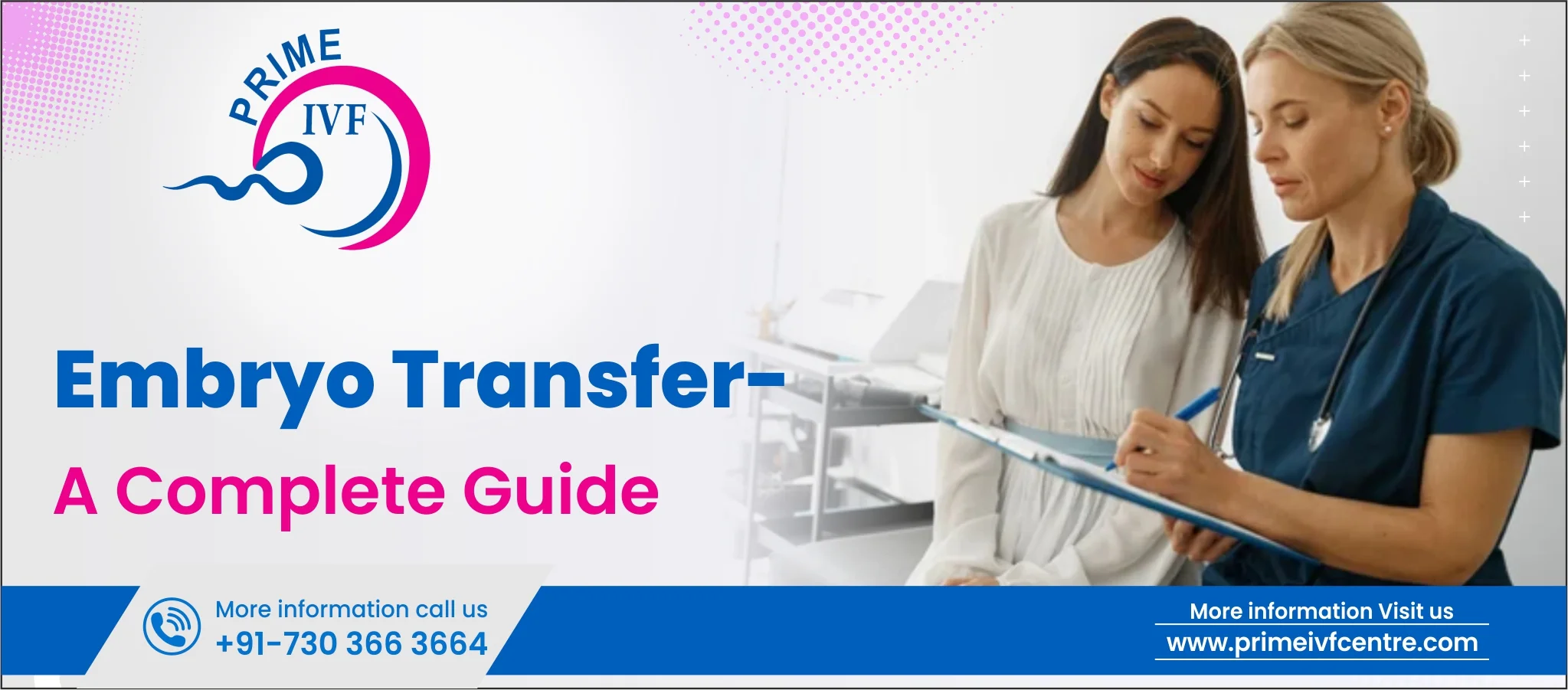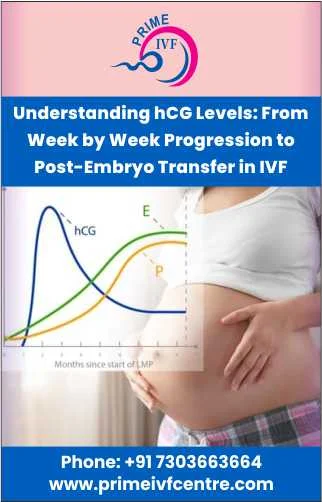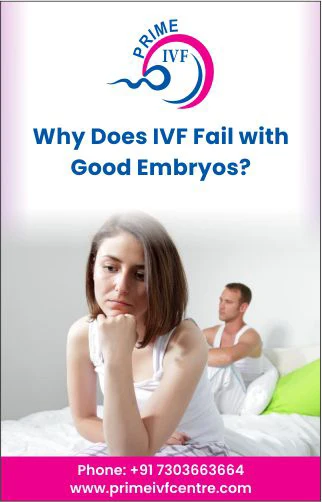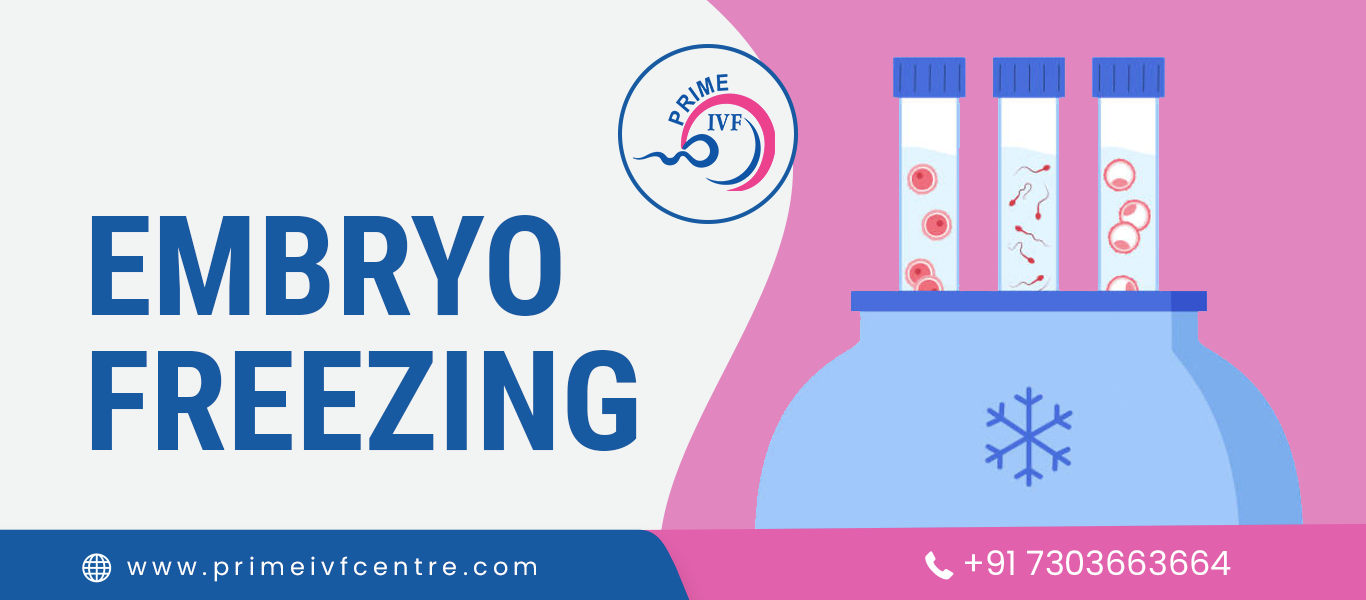Embryo Transfer- A Complete Guide

- 25 Jul, 2024
- IVF and Infertility
- infertility
- Medically Reviewed By:
 Dr. Nishi Singh
Dr. Nishi Singh - Author: Prime IVF Centre
Are you curious about embryo transfer and its role in fertility treatments? This procedure plays a crucial part in assisted reproductive technology (ART), offering hope to couples striving to conceive. Understanding this process is vital for those exploring options to overcome infertility challenges. It marks a significant milestone in the journey towards parenthood, providing a pathway for individuals seeking effective solutions in their fertility treatment plans. Let's explore further with Prime IVF, how embryo transfer is pivotal in fulfilling hopes for a growing family.
Table Of Content
- What is Embryo Transfer?
- Understanding the Need for Embryo Transfer
- Who May Benefit from Embryo Transfer
- Different Methods of Embryo Transfer
- Preparation Before Embryo Transfer
- Day of Embryo Transfer
- How Many Embryos to Transfer in an IVF Cycle?
- Aftercare and Recovery
- Timing and Duration of IVF Implantation Process
- Risks and Complications
- Two-Week Wait: What to Expect
- Pregnancy Test Outcomes
- Conclusion
What is Embryo Transfer?
Embryo transfer is a crucial procedure in fertility treatments, particularly within assisted reproductive technology (ART). It involves carefully placing embryos created through in vitro fertilization (IVF) into the uterus to enhance the chances of pregnancy. This process is designed to optimize the conditions for successful implantation and subsequent fetal development.
By ensuring the precise placement of embryos in a receptive uterine environment, healthcare providers aim to support the natural progression towards achieving pregnancy. This procedure is tailored to individual patient needs, providing personalized care and attention throughout the treatment journey. However, the embryo transfer cost can vary widely depending on the clinic, location, and specific treatment protocol used.
Understanding the Need for Embryo Transfer
IVF Embryo transfer is necessary in various conditions and situations:
- Tubal Blockages: When fallopian tubes are blocked, preventing natural fertilization.
- Male Factor Infertility: Low sperm count or poor sperm quality affecting natural conception.
- Unexplained Infertility: No identifiable cause despite thorough evaluation and testing.
- Failed Other Treatments: Unsuccessful attempts with other fertility treatments like IUI (Intrauterine Insemination).
Who May Benefit from Embryo Transfer
Embryo transfer offers a solution for many individuals facing fertility challenges:
- Couples with Fertility Issues: Those struggling with infertility due to medical conditions.
- Women with Ovulation Disorders: Conditions like PCOS (Polycystic Ovary Syndrome) affecting ovulation.
- Older Women: Women of advanced maternal age facing challenges with egg quality.
- Genetic Concerns: Couples wanting to avoid passing on genetic disorders through pre-implantation genetic testing.
Different Methods of Embryo Transfer
Embryo transfer can be performed using various methods and techniques, each with its own benefits:
- Fresh Embryo Transfer: Embryos are transferred soon after fertilization, usually within a few days. This method eliminates the need for freezing and thawing.
- Frozen Embryo Transfer: Embryos are frozen and stored for future use. The frozen embryo transfer process step by step allows flexibility in timing and can be scheduled according to the patient’s convenience.
- Cleavage Stage (Day 3) Transfer: Embryos are transferred three days after fertilization when they consist of about 8 cells. This method can be beneficial for couples with fewer embryos or specific medical conditions.
- Blastocyst Stage (Day 5) Transfer: Embryos are transferred five days after fertilization when they have reached the blastocyst stage. This method is preferred for its higher implantation rates due to better embryo development.
- Single Embryo Transfer: Only one embryo is transferred, reducing the risk of multiple pregnancies and related complications. This method is ideal for younger patients with high-quality embryos.
- Multiple Embryo Transfer: Two or more embryos are transferred to increase the chances of pregnancy, especially in older women or those with previous unsuccessful attempts. This method carries a higher risk of multiple pregnancies.
Understanding these different methods helps in selecting the most suitable approach for each patient’s unique situation, aiming to maximize the chances of a successful pregnancy.
Preparation Before Embryo Transfer
Proper preparation can significantly impact the success of embryo transfer. Following these diet and lifestyle recommendations can significantly enhance the preparation leading up to embryo transfer.
- Balanced Diet: Eating a diet rich in fruits, vegetables, whole grains, and lean proteins supports overall health and fertility. Avoiding processed foods and excessive caffeine is also beneficial. (Explore: After Embryo Transfer Diet Chart.)
- Hydration: Drinking plenty of water helps maintain optimal body function.
- Avoiding Alcohol and Smoking: These habits can negatively affect fertility and should be avoided.
- Regular Exercise: Moderate physical activity helps maintain a healthy weight and reduces stress.
Some medications and supplements commonly prescribed to prepare for the embryo transfer process include:
- Prenatal Vitamins: Taking prenatal vitamins with folic acid is essential for preparing the body for pregnancy.
- Hormonal Medications: Medications like estrogen and progesterone are often prescribed to prepare the uterine lining for implantation.
- Supplements: Supplements like CoQ10, vitamin D, and omega-3 fatty acids may be recommended to enhance fertility.
Adhering to these guidelines can help create the best possible conditions for a successful embryo transfer, increasing the chances of achieving a healthy pregnancy.
Day of Embryo Transfer
On the day of embryo transfer, expect a structured process designed to maximize success:
The procedure is performed in a clinical setting, typically without anesthesia, although some clinics may offer mild sedation if needed. The doctor uses a thin catheter to gently transfer the embryo(s) into the uterus through the cervix. This is a quick and minimally invasive procedure, often causing minimal discomfort similar to a Pap smear. After the procedure, patients are typically advised to rest for a short period before gradually resuming normal activities. Your doctor will give you detailed instructions to ensure the best possible care and support after the transfer.
How Many Embryos to Transfer in an IVF Cycle?
Deciding on the number of embryos to transfer in an IVF cycle is a crucial decision that involves balancing the chances of a successful pregnancy with the risks associated with multiple pregnancies. Here are some factors to consider:
- Age of the Woman: Younger women generally have higher success rates with IVF, so they may consider transferring fewer embryos to avoid the risk of multiple pregnancies.
- Quality of Embryos: Embryos are graded based on their quality and developmental stage. Higher-quality embryos have better chances of implantation, so transferring fewer high-quality embryos might be sufficient.
- Previous IVF Cycles: If the woman has had unsuccessful IVF cycles in the past, the fertility specialist might recommend transferring more embryos to increase the chances of success.
- Health and Medical History: The woman's health and any underlying medical conditions can influence the decision. For example, women with certain medical conditions might benefit from transferring fewer embryos to minimize risks.
- Personal Preferences and Risks: Some couples may prioritize avoiding the risks associated with multiple pregnancies (such as premature birth and complications) and opt for a single embryo transfer (SET). Others may be open to transferring multiple embryos for higher chances of success, despite the increased risks.
- Legal and Ethical Guidelines: Regulations in different countries or clinics may restrict the number of embryos that can be transferred based on age, embryo quality, and previous IVF history.
Ultimately, the decision on how many embryos to transfer should be made in consultation with a fertility specialist. They will consider all these factors and personalize the recommendation based on the specific circumstances of the couple.
Aftercare and Recovery
Following embryo transfer, adhere to these guidelines for optimal recovery:
- Immediate Post-Transfer Instructions: Rest for a brief period before resuming normal activities. Avoid strenuous exercise and lifting heavy objects.
- Restrictions: Refrain from alcohol, smoking, and excessive caffeine intake. Follow a balanced diet and stay hydrated.
- Managing Discomfort: Mild cramping or spotting may occur, which is normal. Use over-the-counter pain relievers if needed and consult your doctor for persistent symptoms.
Timing and Duration of IVF Implantation Process
Following embryo transfer, implantation typically occurs within 6 to 10 days. Factors such as embryo quality and uterine receptivity influence this timeline. Monitoring hormone levels and symptoms like mild cramping or spotting helps track progress. Patients are advised to remain patient and follow post-transfer care instructions while awaiting pregnancy test results.
Risks and Complications
Potential risks after embryo transfer include:
- Infection: Although rare, there's a small risk of infection.
- Bleeding: Minor bleeding or spotting can occur post-procedure.
- Ovarian Hyperstimulation Syndrome (OHSS): More common with fertility medications, it may cause abdominal discomfort.
Contact your healthcare provider if you experience severe abdominal pain, heavy bleeding, or fever post-transfer. Early intervention can address concerns and ensure optimal recovery and future treatment decisions.
Two-Week Wait: What to Expect
During the two-week wait after embryo transfer, it's natural to experience a mix of emotions and physical sensations as you await the results. Here’s what you might expect during this crucial period:
- Emotional Rollercoaster: Feelings of hope, anxiety, excitement, and nervousness are common. It's normal to have mood swings and feel emotionally sensitive.
- Physical Symptoms: Many women experience mild cramping, similar to menstrual cramps, due to the uterus adjusting to the embryo. Some also report breast tenderness, bloating, or fatigue. Explore: After Embryo Transfer Day by Day Symptoms.
- Spotting: Light spotting or pinkish discharge can occur, known as implantation bleeding, as the embryo implants into the uterine lining. This typically happens around 6-12 days after transfer.
- Medication Side Effects: If you're taking progesterone supplements, you may experience symptoms like breast tenderness, dizziness, or nausea.
- No Symptoms: It's important to note that some women experience no symptoms at all during this period. A lack of symptoms doesn’t necessarily indicate success or failure.
- Avoid Stress: While easier said than done, try to minimize stress during this time. Engage in activities that help you relax and stay positive.
- Avoid Home Pregnancy Tests (HPTs): Testing too early with an HPT can lead to inaccurate results. Your fertility specialist will advise you on the best time for testing.
- Follow Doctor’s Advice: Stick to the prescribed medications and follow any guidelines given by your fertility clinic.
Remember, every woman’s experience during the two-week wait can vary. It’s essential to stay patient and hopeful while awaiting your pregnancy test results.
Pregnancy Test Outcomes
A positive result indicates successful implantation and early pregnancy. It's crucial to confirm the result with follow-up tests to monitor hormone levels. A negative result may be disappointing but doesn't rule out future success. Patients should discuss the next steps with their healthcare provider, including potential adjustments to treatment or further cycles as needed. Emotional support and careful monitoring are essential during this phase.
Conclusion
Understanding its importance can empower individuals in their journey towards starting a family. If you're considering or undergoing embryo transfer, remember you're not alone—seek support from loved ones and healthcare professionals. Prime IVF Centre is committed to providing compassionate care and advanced techniques to help you on this path. Trust in our team's experience and dedication as we collaborate to fulfill your aspirations of parenthood.














